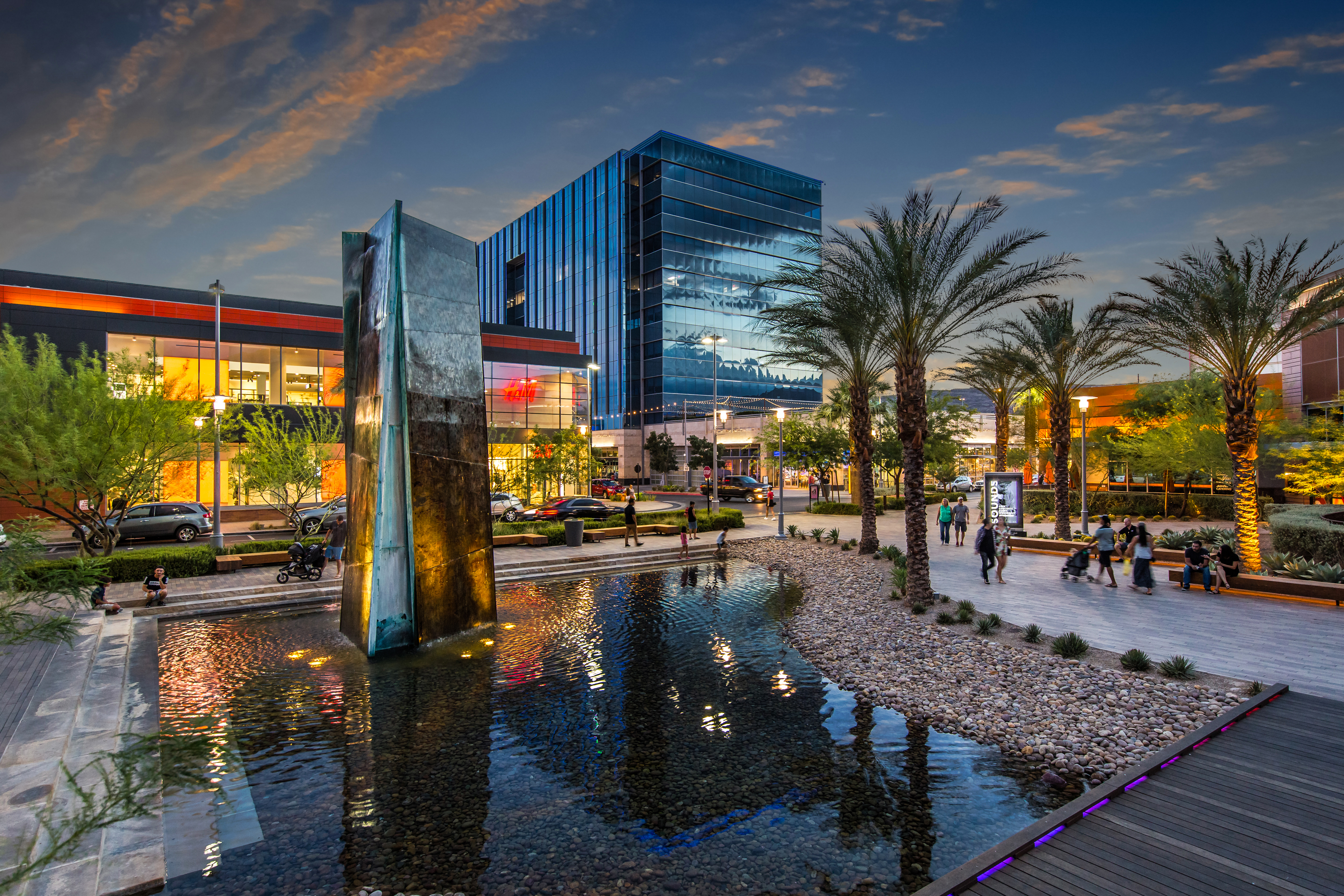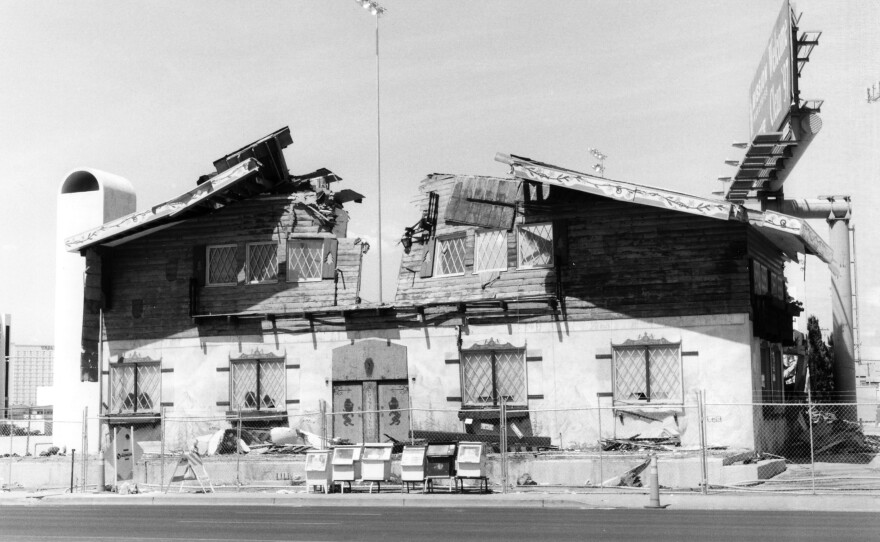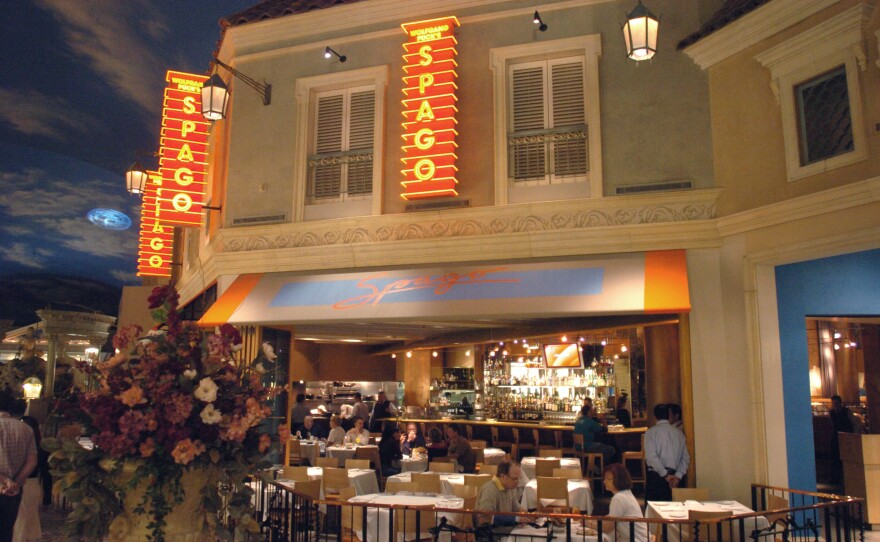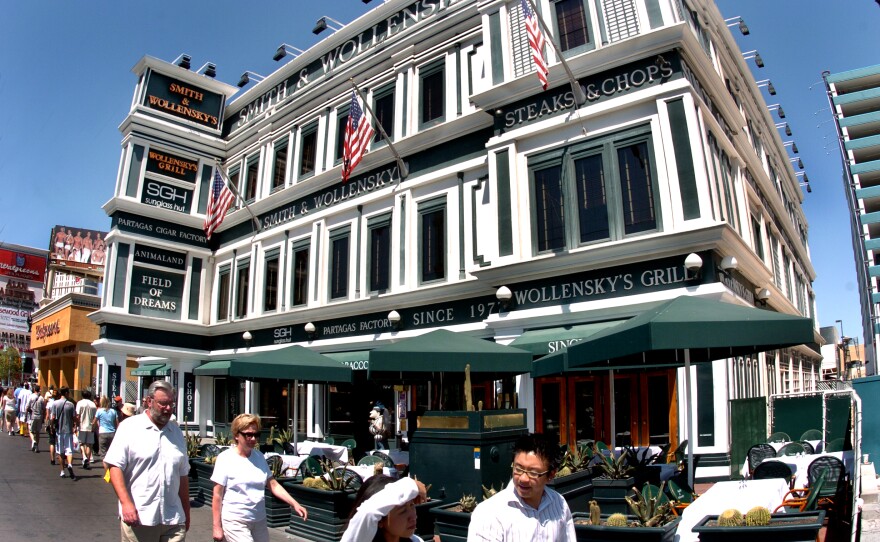According to Guinness World Records, Madrid’s Sobrino de Botín has been serving meals since 1725, making it the world’s oldest continuously operating restaurant. Las Vegas, by contrast, is known more for reinvention than preservation. Here, the neon never sleeps, buildings come and go, and trends flip with every season.
Las Vegas has always been a city built on bold bets—and not just at the tables. While today’s Strip dazzles with celebrity chefs and global cuisine, the city’s culinary scene had humbler beginnings, shaped by saloons, sandwiches and sheer grit.
Officially founded on May 15, 1905, Las Vegas began as a dusty railroad town, just a mile from an earlier Mormon settlement dating back to 1855. With the arrival of the San Pedro, Los Angeles and Salt Lake Railroad, a new boomtown emerged—bringing with it an appetite for entertainment, lodging and something stronger than water.
The city’s first bar is widely believed to be the Arizona Club, which opened that same year. It quickly became a fixture in the fledgling downtown, serving whiskey to thirsty railroad passengers and workers carving out a new life in the Mojave Desert.
Just steps away, the Golden Gate Hotel and Casino, also built in 1905, welcomed guests with comfort and excitement. During Prohibition, it even featured a hidden bar, keeping the party alive when the law tried to shut it down. While booze flowed freely in Vegas’s early days, food was another story.
Before the Strip, before buffets and long before fine dining, meals in Las Vegas were little more than an afterthought. In the early 20th century, culinary offerings were limited to home kitchens, bar-top sandwiches and the occasional boarding house stew. Dining out was a big-city luxury—not for a raw, sunbaked town in the desert.
That began to change in 1931, when two transformative events reshaped Southern Nevada: the legalization of gambling and the start of construction on the Hoover Dam. With new workers flooding into the area, demand for food and drink skyrocketed. While most eateries remained informal, the seeds of a dining culture were slowly being planted.
Even in this ever-changing landscape, a few local legends endure—like one still serving steak and whiskey just off the beaten path.
Located in North Las Vegas, the Hitchin’ Post Saloon & Steakhouse holds the distinction of being the oldest continuously operating restaurant in the Las Vegas area. Opened in 1948, the Hitchin’ Post is a genuine piece of Old Vegas history—one that predates the Rat Pack era, the megaresorts and even the iconic “Welcome to Fabulous Las Vegas” sign.
The restaurant, located within the Hitchin’ Post RV Park & Motel, originally catered to road-weary travelers and ranch hands. Today, it remains a family-friendly roadhouse known for hearty portions, rustic charm and an unpretentious atmosphere—a throwback to a time before celebrity chefs and curated tasting menus.
Atomic Liquors first opened as Virginia’s Café in 1945 but transitioned into Atomic Liquors in 1952, obtaining the first tavern license issued in Las Vegas (license No. 00001). The permit allowed the establishment to sell beer, wine and mixed drinks. It’s considered the longest-operating freestanding bar in the city.
The first buffet in Las Vegas debuted at the El Rancho Vegas hotel and casino in the 1940s, helping popularize the now-famous concept.
Few families embody the spirit of Las Vegas hospitality like the Ruvos and the Perrys. For Angie Ruvo, hospitality was second nature—part of her family’s DNA. Her sister, Maria Perry, shared that gift, opening restaurants alongside her husband, Al Perry, and later passing the tradition to their daughter, restaurateur and former Nevada Lt. Gov. Lorraine Hunt-Bono.
In 1955, Angie and her husband, Lou Ruvo, joined forces with Maria and Al Perry to open the Venetian Pizzeria on Fremont Street, believed to be the city’s first pizzeria. A decade later, the families expanded their culinary footprint with the Venetian Ristorante on West Sahara Avenue. This elegant Italian restaurant became a local favorite from 1966 until its sale in 1997. The restaurant closed in 2003, but its influence lingered.
That legacy resurfaced when Larry Ruvo, Angie and Lou’s son, published The Venetian Memories. In it, he recalls a pivotal meeting with developer Sheldon Adelson, who was preparing to open The Venetian Resort Las Vegas in 1999. According to Ruvo, the family owned the rights to the “Venetian” name and negotiated a gesture of recognition: a commitment from Adelson to support the creation of the Lou Ruvo Center for Brain Health, in honor of Lou Ruvo.
Today, the original Venetian Ristorante building houses Herbs and Rye, one of the city’s most celebrated cocktail lounges, where remnants of the original space—and echoes of its history—remain.
Las Vegas saw its first true destination restaurants in the 1950s—not just places to eat, but places to be.
Not every chapter in Las Vegas’s restaurant history is defined by growth and glamour. In the 1970s, tensions between the Culinary Union Local 226 and several off-Strip establishments escalated, culminating in violent incidents that rattled the city’s dining scene.
One of the most infamous targets was the Alpine Village Inn, a Bavarian-themed restaurant on Paradise Road. Known for its schnitzel, fondue and distinctive Alpine décor, the restaurant was packed most nights. That made the events of 1975 even more shocking.
In September of that year, a small bomb exploded in an employee locker room. Three months later, another device detonated on the roof, tearing through the building while more than 400 diners were inside. Miraculously, no one was injured.
The violence continued into 1976. On Jan. 12, a bomb went off at David’s Place, a gourmet restaurant on East Charleston. Another device was discovered—though did not explode—at Starboard Tack on Jan. 24, 1977.
Though unrelated to the labor unrest, another bombing would leave its mark on Las Vegas restaurant lore. On Oct. 4, 1982, mob figure Frank “Lefty” Rosenthal survived a car bombing outside Tony Roma’s on East Sahara Avenue. That location eventually closed, but the Tony Roma’s name lives on at the Fremont Hotel and Casino.
As the 1980s gave way to the 1990s, Las Vegas welcomed its first celebrity chef restaurant: Spago by Wolfgang Puck, which debuted in 1992 and remained open until 2018.
Smith & Wollensky, the first high-end freestanding steakhouse on the Strip, opened in 1998 and relocated to The Grand Canal Shoppes in 2019.
As Las Vegas evolved from a tourist destination into a full-fledged metropolis, its population diversified. Among the fastest-growing groups were Asian and Native Hawaiian/Pacific Islander communities, whose influence is now woven into the city’s culinary identity.
Las Vegas is home to one of the largest Hawaiian populations outside Hawaii, often referred to as the “Ninth Island.” This culture is felt through food, festivals and a shared sense of aloha across the valley.
In 1995, Taiwanese American developer James Chen opened Chinatown Plaza, which quickly flourished. Unlike organically developed Chinatowns, this was a deliberate commercial venture. Officially designated in 1999, the corridor now features more than 150 restaurants and six Asian supermarkets, offering everything from dim sum to Sichuan hot pot.
In the Arts District, the warm scent of baking bread once wafted from Holsum Bakery. Its weathered sign still towers over the neighborhood. The area’s rebirth began in the late 1990s, when Wes Myles opened The Arts Factory, sparking the transformation of this 18-block downtown enclave into a hub for creativity—and cuisine.
Fueled by the vision and investment of the late Tony Hsieh, Fremont East transformed into a celebrated culinary collective. From all-American fare to Thai street food and wood-fired pizza, the neighborhood keeps locals and visitors coming back.
Meanwhile, Henderson is no longer just Las Vegas’ quiet neighbor. Green Valley offers polished dining near The District at Green Valley Ranch, while the revitalized Water Street is a rising star in Southern Nevada’s food scene.
Summerlin, too, has emerged as a culinary destination. Downtown Summerlin boasts a walkable mix of fast-casual and chef-driven restaurants—a rarity in suburbia—with the Red Rock mountains as its scenic backdrop.
In 2025, Las Vegas’s culinary future is being written not under the chandeliers of casino dining rooms, but in neighborhood kitchens—by chefs who once trained under Joël Robuchon, Gordon Ramsay and Thomas Keller, now launching bold, personal ventures.
Head west on Spring Mountain, south past Blue Diamond, or into the heart of downtown to discover a new kind of Las Vegas—one where every bite tells a story.











